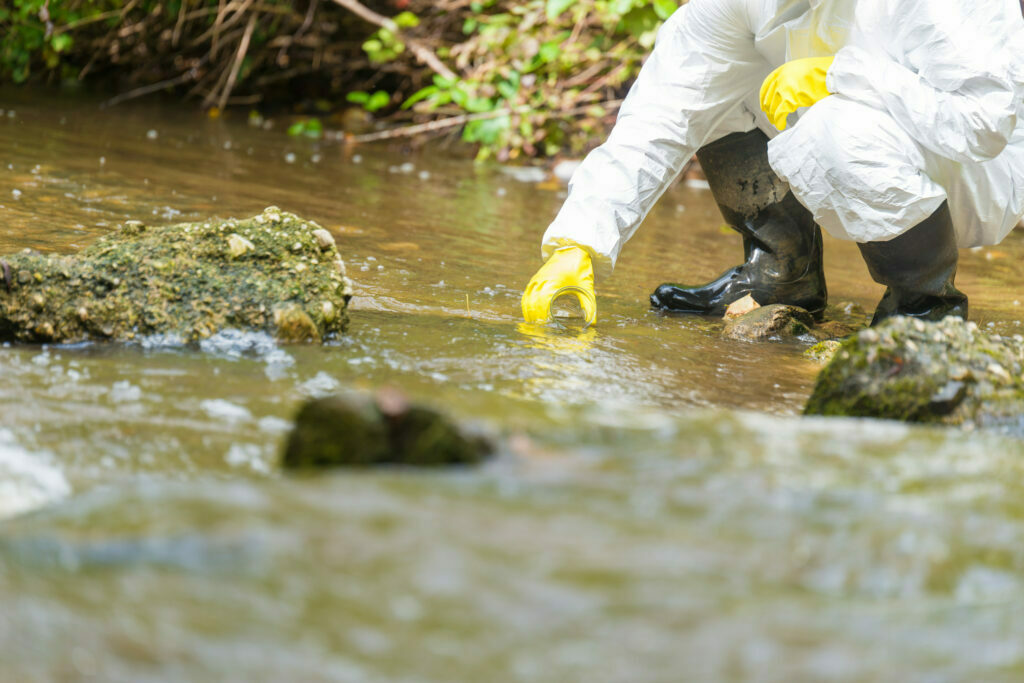Even when water is available in Makhanda – and supply has been precarious to say the least – residents are concerned about the quality of municipal water flowing through their taps. The last water compliance test posted to the Makana Municipality website is dated November 2019. MARY CHIBWE, a PhD candidate at the Institute for Water Research, Rhodes University considers some solutions for monitoring and improving local water quality.
Even when water is available and flowing through the taps in Makhanda, water quality issues arise. The water in our taps originates from rivers, is treated then distributed to consumers. Water quality needs to be managed and monitored at the source (rivers), the water treatment works, the distribution system and at the point of consumption.
The living organisms in the river which can naturally purify water are heavily affected by pollution. These rivers are the actual source of water and need to be protected. Pollutants introduced in rivers may end up at the tap. In addition to a sound water supply system and infrastructure, such as water treatment, the health of our rivers is essential.
Residents have complained about the appearance, colour and taste of tap water. Water quality is defined mainly by its microbiological, physical and chemical parameters. Water for human consumption should be free of pathogenic organisms and other constituents that may affect human health.
Although consumers may not detect pathogens in water with their senses, they can taste, see and smell water. Aesthetic parameters such as colour, taste, turbidity and odour of water are the first signs consumers notice, leading to the rejection of water by consumers.
It is common practice in Makhanda to buy water for drinking from supermarkets or private water supply companies. Other residents, mainly those with means of transport, opt to fetch drinking water from a spring located in the outskirts of the town. The people who cannot access spring water due to distance or cannot buy drinking water are left with no choice but to drink tap water. Even those who buy water or use spring water use tap water for cooking, tea/coffee, washing fruits and vegetables; hence if the quality is poor, they may also be at risk.
To protect public health, the water providers need to monitor water supplies to ensure conformity to acceptable standards or guidelines. The quality, quantity, coverage, affordability, accessibility and continuity of water supplies are benchmarks for a good water supply. This is necessary for operational and regulatory purposes to sustain safe supply and assess the reality of water service provision in the community. It is cardinal to identify the factors that can lead to contamination of the water supply system and monitor how water quality changes temporally and spatially.
This should begin with an inspection of water sources, the water treatment works, and the water supply system to identify the factors that can lead to water contamination. Routine collection of water samples throughout the distribution system for testing, analysis and interpretation of water quality results should be prioritised. There must be transparency in reporting results and communication with the relevant stakeholders and the community.
Apart from aesthetic parameters observed by the community, information suggests that drinking water quality does not always meet the required limits for microbiological and chemical parameters, i.e. South African National Standards: guidelines for safe drinking water (SANS 241).
Challenges
Problems in water supply include old and damaged infrastructure, leakages, water loss and low pressure. All these affect the quality and availability of water. Leakages in the water supply, for example, increase the risk of contamination, especially since the streets are characterised with faecal matter from animals that move unrestricted in town.
The faecal matter can be washed into the water supply and runoff water. Population growth in the city has not been matched with infrastructure development. Surveillance of water quality is poor, and the dual role of the municipality (Water Service Authority and Water Service Provider) further weakens efforts to ensure the provision of potable water.
Solutions
There is an urgent need to improve the infrastructure for water treatment, water supply and sanitation in the town. The movement of animals must be restricted as faecal matter is not only unpleasant to the sense of sight but can contaminate the water supply system and streams and may lead to outbreaks of diseases.
We need increased water quality surveillance and maintenance of the water supply system. And we need to encourage rainwater harvesting and more investment in alternative sources of water such as groundwater. Lastly, we need community engagement in the management of water resources and collaboration with local institutions such as Rhodes University (engaging experts in water quality, student interns and use of laboratory facilities).


